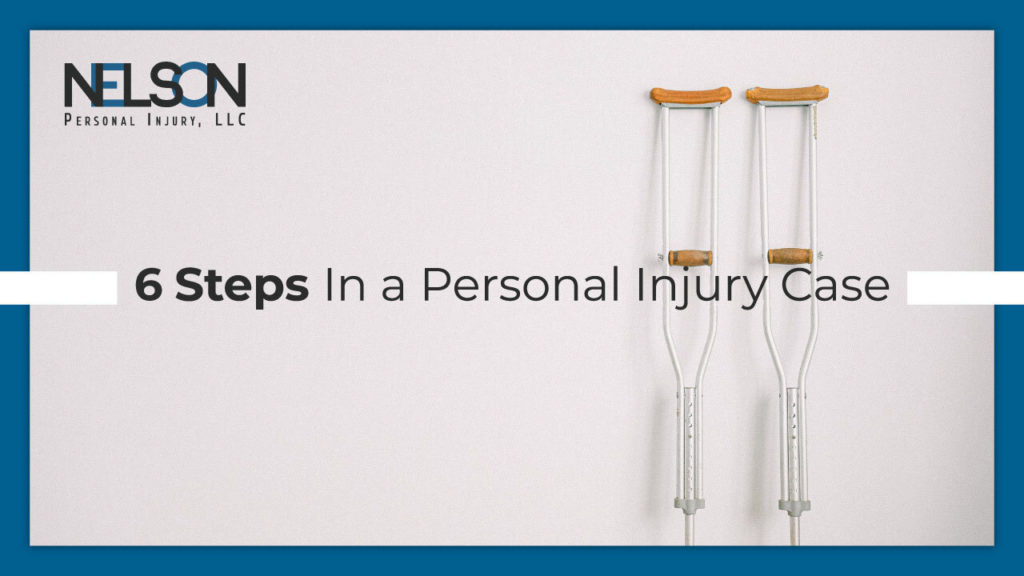Every personal injury case is unique, and exactly how any one given case plays out will depend on a variety of different factors. However, there are typically six basic steps in the life of a personal injury claim.The
1. Accident
Every personal injury case begins with an accident and injury. Because memories fade quickly, it is important to document as much as possible about the facts of the accident. The best way to do this is to make sure the police are called to the scene so that they may conduct an investigation and create an accident report that contains the details of the situation. If the police do not respond to the scene, it is important to gather as much information as possible, including the name and insurance information of the involved parties, the names and contact information of any witnesses, and photographs of the property damage and location of the accident. All of this information will be useful later on when dealing with the insurance companies.
2. Attorney Consultation and Representation
After an individual has been injured in an accident, so that their rights are protected, it is important to consult with a personal injury lawyer. An experienced personal injury attorney will conduct a thorough investigation into the matter and determine what possible claims the person may have. The attorney will then be able to advise the injured person as to their rights and decide whether representation is appropriate at that time. If the injured person decides to hire a lawyer, they will fill out the necessary paperwork to begin the representation. Once the representation begins, the attorney will put all insurance companies on notice of the representation.
3. Monitoring the Injuries and Treatment
The next step is for the injured person to follow through with their doctors’ recommended treatment. Once the person has reached “maximum medical improvement” (typically one year or so after the accident), the attorney will order all of the client’s medical bills and records, and try to obtain a comprehensive report from the treating doctor. This report would lay out, among other things, the nature, extent, and permanency of the injuries, and whether or not future medical care will be needed.
4. Demand and Negotiations
Once the medical records, bills, and medical report have been obtained, the attorney will draft a settlement demand letter to submit to the liability insurance company. This demand letter will contain a demand amount that the client would accept to settle the claim. The insurance company will typically take 30-60 days to review the demand and complete their evaluation and make an offer. Depending on the offer and the situation, the parties may engage in additional back and forth negotiations and reach a settlement. The amount of the settlement depends largely on the specifics of the accident, the nature, extent, and permanency of the injuries involved, how much there is in medical expenses and wage loss, as well as applicable insurance coverages. If a settlement cannot be reached, the injured person would have to decide to start a lawsuit against the party or parties who caused the accident and injuries.
5. Litigation/Lawsuit Process
The lawsuit process begins with service of a summons and complaint on the defendant(s). The parties then go through the discovery process, which includes written questions and answers called interrogatories, document requests, requests for admission, and an in person, under oath interviews, called depositions of the parties and/or third party witnesses. Typically, after discovery, the parties are required by the court to participate in a mediation, where they meet with a neutral, third party mediator, who will try to get the parties to reach a settlement. If a settlement can be reached, the case will be concluded. If a settlement is not reached, the plaintiff may have to attend a medical examination at the request of the defense. The parties will then meet with the judge prior to trial for what is called a “pre-trial hearing.” At a pre-trial hearing, the judge will try to prepare the case for trial with the parties, set a trial date, and see if a settlement could still be reached. If it cannot, the case will proceed towards trial.
6. Trial
If the personal injury case goes to trial, then, over the course of 3-5 days or more, either a jury or the judge will 1) hear and weigh the arguments of the parties and the evidence presented; 2) determine if the defendant is at fault for the accident; and 3) determine the plaintiff’s damages, which typically includes past and future medical expenses and wage loss, and past and future pain suffering, and emotional distress. Once a jury has reached a verdict the case is typically concluded, unless there are any appeals.
The personal injury attorneys at Nelson Personal Injury understand that personal injury claims can be difficult and confusing. That’s why we work hard to make sure you understand the process, and get the fair and maximum compensation for your injuries. Contact the lawyers at Nelson Personal Injury today for a free consultation: nelsonpersonalinjury.com.




